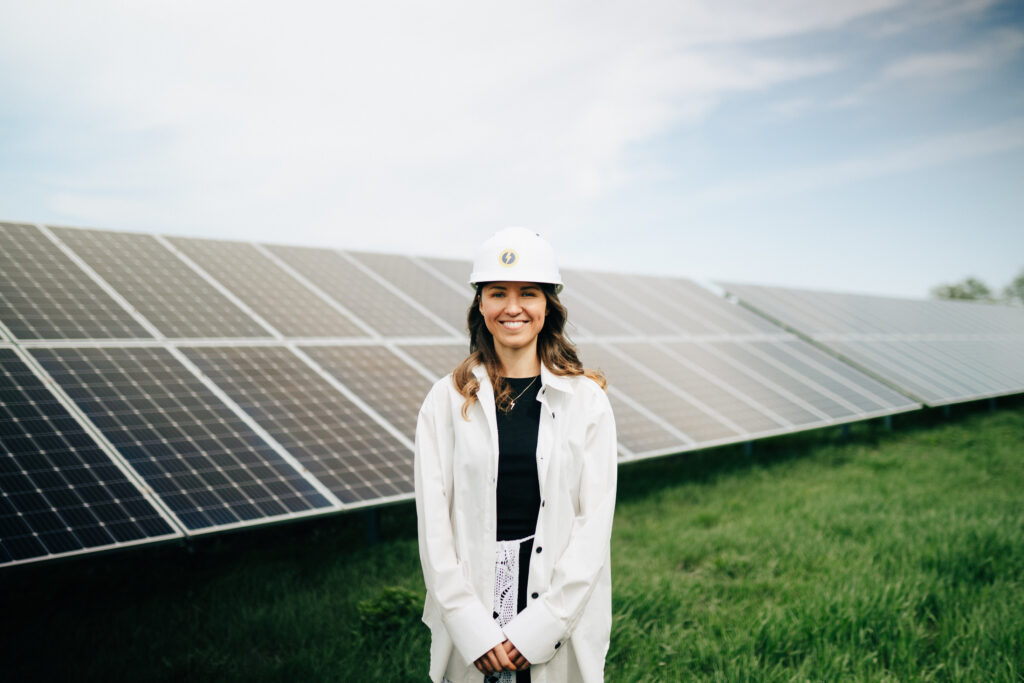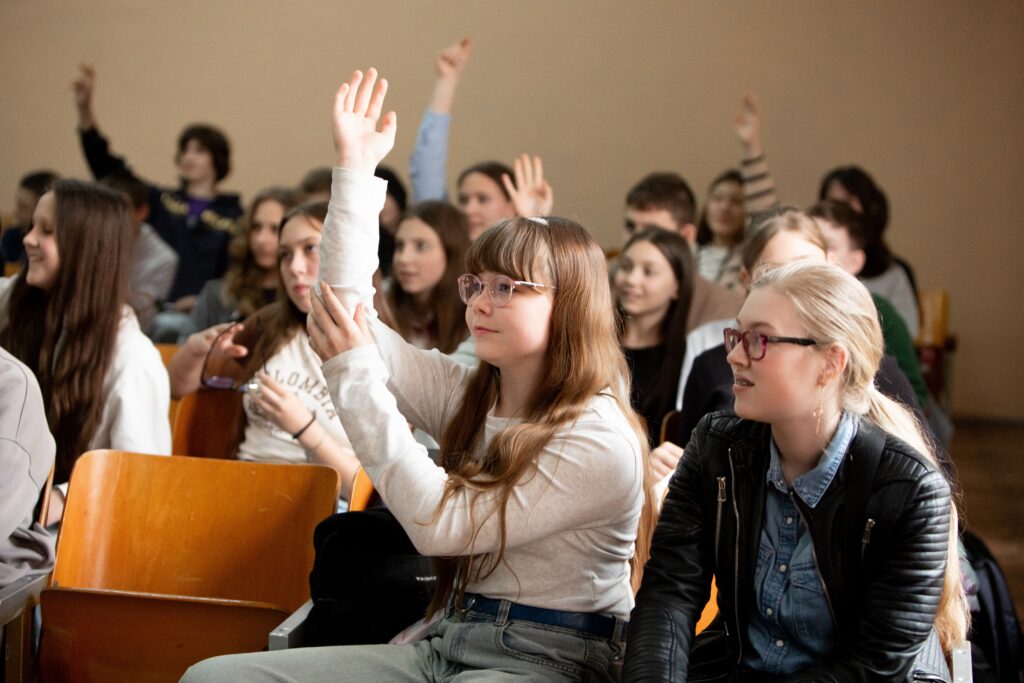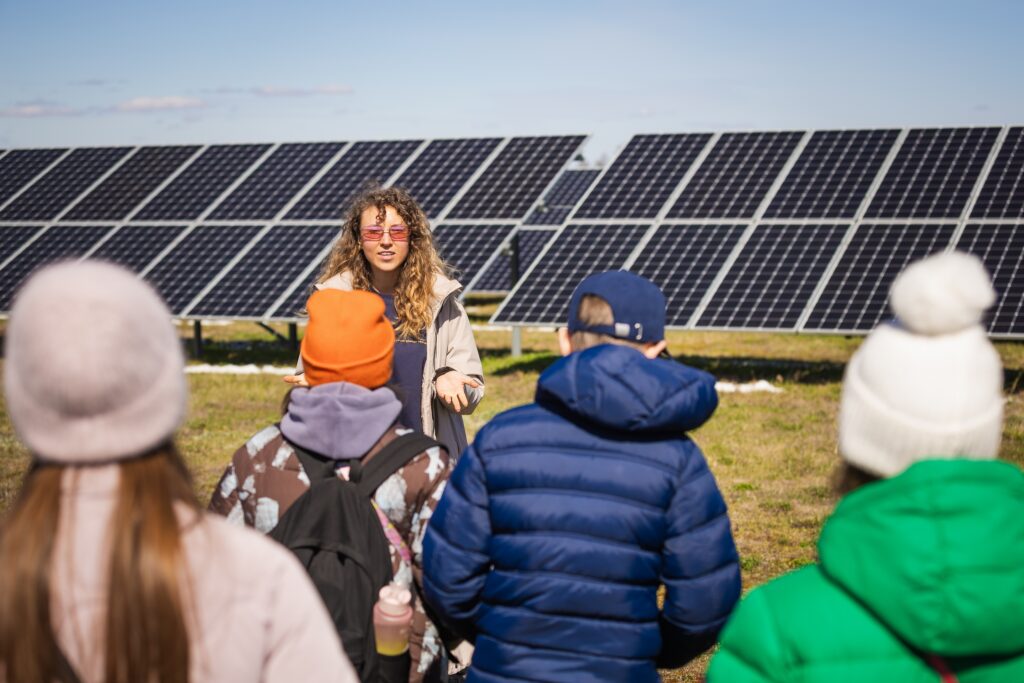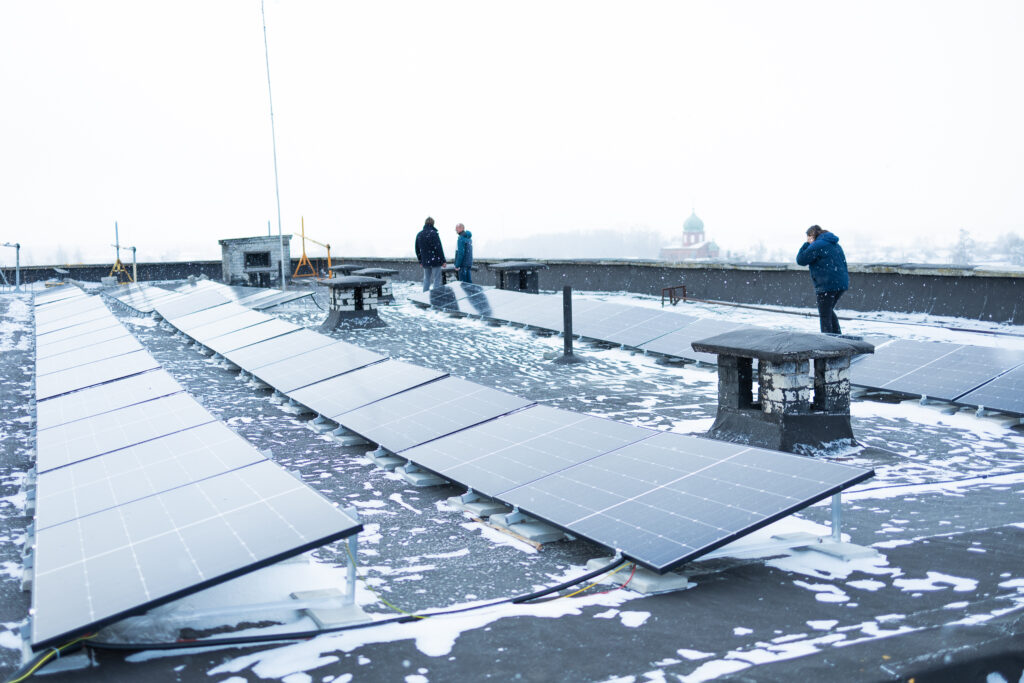When Russian forces invaded Ukraine in February 2022, energy grids were among the first and most visible targets, leaving Ukrainians bracing for humanitarian catastrophe.
Power plants were shelled, transmission lines severed, and water supplies and essential communication channels disrupted amid a bitter winter. Ukrainians mobilised and defending territory and life relentlessly in darkness. In the winter of 2022–2023, 50% of Ukraine’s power infrastructure was damaged or destroyed, and emergency blackouts affected more than 8 million households at a time. Russia’s systematic infrastructural attack constituted a war crime, and altered the nature of how we now think about energy security, resilience, and sustainability amid acute emergencies. At a time where human rights violations, war crimes, and indefensible civil and infrastructural attacks are on the rise, the Energy Act for Ukraine Foundation (EAFUF), has designed a strategy to address the climate emergency in tandem with the urgent need for wartime energy resilience.
Founded by Yuliana Onishchuk just weeks after Russia’s ground invasion, the foundation is part of a sweeping shift toward decentralised, renewable energy solutions in crisis zones.
Its flagship projects, 100 Solar Schools and 50 Solar Hospitals, operate at the intersection of social and environmental wellbeing, fusing affect and practicality, survival and long-term systemic change. EAFU’s hybrid energy systems keep schools and hospitals running during blackouts while introducing a new generation of Ukrainians to the possibilities of renewable energy. In a sector where 86% of workers are men, the foundation is also actively training women to become solar project managers and future leaders in a post-war economy. Icarus Complex researcher and writer Linda Förster spoke with Yuliana Onishchuk to explore what it means to embody hope, resistance, and care for the most vulnerable, while rebuilding a nation under siege.

Linda Förster: Could you share the story behind the founding of the Energy Act for Ukraine Foundation? What were the key challenges that inspired its creation in 2022?
Yuliana Onishchuk: To go back to the beginning, when the war started, I’d already been working in the energy sector for about eight years. I was involved in renewables and electricity grid work, particularly in international organisations. So energy was always close to my heart. Even before the war, it was already clear to me that I wanted to shift toward something with more social impact. The first concrete idea we had was building solar power systems for schools, because that was the best way I knew how to show support for people in Ukraine suffering under occupation. It was a way to manifest hope and something real that could encourage the younger generation to stay in the country. It was just one month into the war when I declared I’d start an NGO. I began searching for schools, particularly in Irpin and Bucha, just after the Russian army had left.
What we saw there, and what the media showed, doesn’t begin to describe the reality on the ground. So I wanted to bring hope, to help these schools not just recover, but become even better than they were before the war. The phrase “build back better” truly fits the idea. That’s what really pushed me to create the Energy Act for Ukraine Foundation: staying in Ukraine, staying with the people, and doing what I know best, but doing it better than before. I kept imagining solar panels on the roof of a school in Irpin. It was a vision I couldn’t let go of. I thought about the kids returning – how cool it would be for them to come back to a school that’s now running on solar. A school that’s not just functional, but improved.
I wanted to show that even in the midst of something as awful and devastating as war, beautiful things can still emerge. New opportunities can still arise.

LF: The words that stood out to me are “building back better.” It’s a powerful and intersectional way of thinking about energy. What made you choose schools specifically? Why was that the starting point?
YO: For me, it was about the children. So many adults left Ukraine. But the children, they’re still here, trying to continue their education during a war. That’s incredibly stressful. I wanted to give them something. I wanted to show that even in the midst of something as awful and devastating as war, beautiful things can still emerge. New opportunities can still arise. I thought: if we build solar for schools, maybe it would bring joy. Maybe it would interest them in renewables. Maybe it would distract them from what’s happening around them, just a little. And I was there when the first system was built. That mattered to me. I didn’t want this to feel like something foreign or distant. I wanted the kids to see that it was young Ukrainians who did this for them. People not so much older than they are. But also, I knew the state wouldn’t do this for schools or hospitals. Before the war, solar energy in Ukraine was rare. There were maybe one or two installations for the public, it was a business-oriented industry. There was no culture of renewables among everyday people. If we want people to mature in their thinking about energy and the environment, we need to involve them. We need to build solar systems for public buildings they use daily. That way, it becomes normal. They see it. They ask questions. That’s how awareness grows – not just by talking, but by doing.
If we want people to mature in their thinking about energy and the environment, we need to involve them. We need to build solar systems for public buildings they use daily.
LF: In 2022, while Ukraine’s grid was under direct assault, you chose not diesel generators, but solar energy. Why bet on renewables in a war zone? What did you see in solar that others missed in the calculus of wartime logistics and resilience?
YO: Interestingly, when the idea came to me, there hadn’t yet been attacks on the energy system. It might sound strange, but even with the war, even with the danger, I felt it was necessary. And almost nobody supported me at the time, people thought I was crazy. Everyone was saying we should focus on the army or humanitarian aid. Even my parents said, “What is this?” But for me, it wasn’t about emergency power supply, I wasn’t trying to fix blackouts yet.
I believed we would win. If they didn’t take Kyiv in three days, they wouldn’t take it at all. That gave me a sense of security. Also, I wanted to make a long-term impact. I saw an opportunity. The world was paying attention to Ukraine. Energy companies, environmental groups all wanted to help, but not necessarily through military means; so I found our audience. Generators didn’t make sense to me since they rely on fuel, fuel was already scarce. So why invest time and resources into something that would ultimately become unsustainable? With my knowledge, network, and energy, I knew I could do something bigger. And I wanted people to be shocked—to say, “Wait, there’s a solar station at our school?”
That reaction alone opens minds. It creates momentum. We did receive some generators through donations, and we sent them to frontline hospitals. But our focus was always solar with battery storage. Every project we do includes storage, always.

LF: You mentioned long-term thinking during a crisis. Most people default to short-term survival thinking. But you went in the opposite direction. What mindset allowed you to think long-term when everyone around you thought it wouldn’t work?
YO: I knew Ukraine would survive. I was absolutely sure this was the moment to do things that would otherwise take 10 years. Under normal circumstances, no one would fund solar for social buildings. They’d say, “Why should we? The government should handle that.” But during the crisis, while others focused on short-term needs, I chose to focus on the long-term. That was my role. And once we showed it was possible, others followed. After we finished our first school in November 2022, the blackouts began. Suddenly, we had a working solution exactly when it was needed. The European Commission saw it. Programs started forming. Other NGOs followed. It catalysed change, exactly as I’d hoped.
LF: Hybrid solar plants are part of your “100 Solar Schools” and “50 Solar Hospitals” projects. How do these decentralised energy sources help reduce Ukraine’s risks of energy isolation, especially during wartime?
YO: We build hybrid solar systems – meaning solar panels and energy storage – with the goal of diversifying the energy supply. So if there’s a blackout, the building still has power. Usually, they have the national grid, solar panels, battery storage, and often a diesel generator as a final backup. But our focus is on the critical units; for hospitals this includes surgical units, intensive care, maternity, and for schools it’s shelters, gyms, even whole floors. These systems drastically reduce electricity bills and ensure that, even in a crisis, the most important operations continue. When blackouts happen, they use stored or solar energy. Only in rare cases do they switch to the generator, and actually, none of our schools or hospitals have had to rely on them yet. At the start of the war, nobody had any of this. They were completely vulnerable. Now, we’re helping them become independent and prepared. I just hope we never have to see those systems tested in the same way again. Of course, we don’t build close to the front line. Usually nothing closer than 80 or 100 kilometers to the border. And if we see Russian troops advancing or very active shelling, we might refuse to install panels there, not because we’re afraid of losing the equipment, but because no one will go there to install it. Sometimes it’s just not possible and we can’t find installers willing to go, our own team won’t go. So we rely on subcontractors. But even they often refuse. In those cases, we shift to safer locations.
These systems drastically reduce electricity bills and ensure that, even in a crisis, the most important operations continue.

LF: You have spoken about a mentorship-based course designed to provide Ukrainian women with skills to enter the renewable energy sector, noting that “women can become a driving force for change in this industry.” Can you elaborate on the role of women in Ukraine’s energy recovery and how your Foundation supports gender inclusion in a traditionally male-dominated field?
YO: Staying in the country during war means facing a new challenge every week. You don’t think about yourself, you just do what has to be done and wait for it to end. But over time, the war’s longer-term effects became more visible, especially economically. Millions of people left the country. And by the end of 2023, everyone in the job market felt it: you couldn’t find people for almost any position. Not just engineers or specialists, even waiters, accountants, administrators. By early 2024, I felt it too. I couldn’t find anyone to hire. At the same time, international partners were pushing for recovery programs, especially in energy. But most men are mobilised or avoiding mobilisation, and don’t show up for job interviews. The energy sector—already male-dominated—was hit especially hard. Suddenly there were no experts for anything. Even our solar projects were affected. We’d secure donor funds, prepare everything, and then new mobilisation rules would come in, and none of the installers would show up. They were afraid of being taken straight to the front line from the rooftop. So we asked ourselves: how can we fix this? What can we, as a foundation, do to help, not just others, but ourselves? And the answer was clear: we can educate women. Gender inequality in the energy sector has always been there. In Ukraine, 86% of people in energy are men. It’s the same in most countries. So we decided to act – to motivate and invite women into the field, and give them the knowledge and tools to succeed. We created an educational course in solar project management, specifically, how to manage the construction of solar power plants. It’s built around mentorship, a strong community approach, and practical skills.
Most men are mobilised or avoiding mobilisation, and don’t show up for job interviews. The energy sector—already male-dominated—was hit especially hard. Suddenly there were no experts for anything.
LF: Are there any aspects of your foundation that you specifically designed to be replicable? Things that could be implemented in other regions dealing with instability or crisis?
YO: Yes, I think the way we’ve developed and the way we operate is, in fact, scalable. You could call it a business model, if you like. It’s based on having a core team, but also a wider network of people on the ground who can carry out technical work. Essentially, we function as the project managers of the entire process. And that model is definitely scalable. We’ve also created a number of internal frameworks – documents, procedures, ways of working – for installers, for volunteers, and for our own staff. And, it works. It’s effective and it’s something that could easily be replicated in other countries to help in similar contexts. No one’s ever asked, so thank you for raising it.